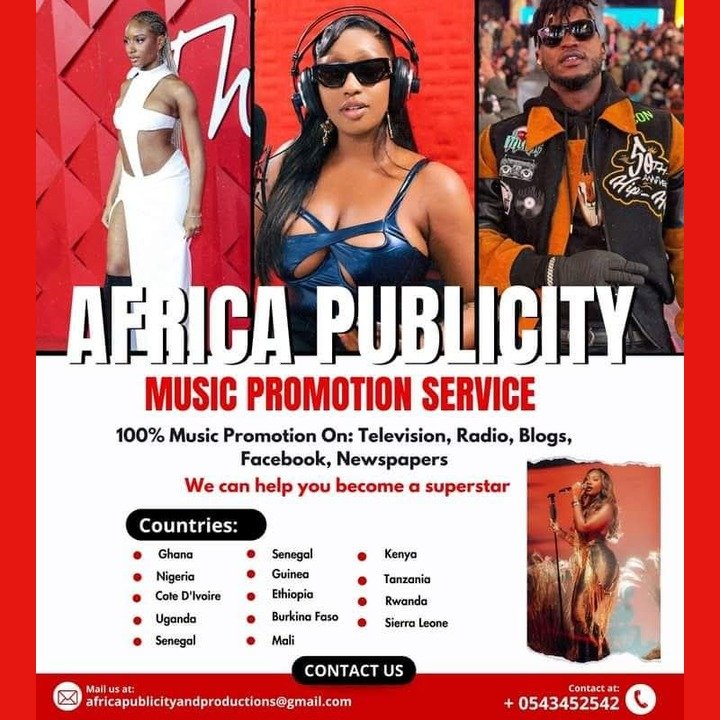Source: Africa Publicity
Hip-hop culture, born in the Bronx, New York, in the early 1970s, has transcended its American roots to become a global phenomenon. It encompasses a diverse array of elements, including rapping, DJing, breakdancing, and graffiti art, each contributing to its rich tapestry. To truly understand the evolution and global impact of hip-hop, one must embark on a journey through various African regions, where the culture has been adapted and reinterpreted in unique ways.
Roots in the Bronx
The story of hip-hop begins in the Bronx, where DJ Kool Herc, an immigrant from Jamaica, threw the first hip-hop party in 1973. His innovative use of two turntables to extend breakbeats laid the foundation for hip-hop music. The early pioneers, including Grandmaster Flash, Afrika Bambaataa, and Run-DMC, helped to shape the genre, blending funk, soul, and disco to create a new sound that resonated with the youth of the era.
Hip-Hop in Nigeria: Lagos Vibes
Fast forward to the late 1980s and 1990s, and hip-hop began making its way to Africa, where it found fertile ground in Nigeria. In Lagos, the bustling economic and cultural hub, artists like Eedris Abdulkareem and the group Trybesmen started incorporating local rhythms and languages into their music. Nigerian hip-hop, often called Naija hip-hop, addressed social and political issues, resonating deeply with the youth.
One of the pioneering figures was Eedris Abdulkareem. His song “Jaga Jaga” criticized corruption and inequality in Nigeria, becoming an anthem for the disenfranchised. The Lagos hip-hop scene was vibrant and eclectic, with artists blending traditional Nigerian music with the beats and rhymes of American hip-hop, creating a distinctive sound that was both local and global.
South Africa: The Rise of Kwaito
In South Africa, hip-hop took on a different form. During the late 1980s and early 1990s, as the country was transitioning from apartheid to democracy, a genre called Kwaito emerged. Kwaito, a fusion of house music, hip-hop, and traditional African sounds, became the voice of the new generation.
One of the key figures in this movement was Arthur Mafokate, whose hit “Kaffir” addressed racial issues and challenged the status quo. The genre provided a platform for black South Africans to express their frustrations and aspirations, blending the rebellious spirit of hip-hop with local musical traditions.
Senegal: The Voice of the People
In West Africa, Senegal emerged as a hotbed for hip-hop, particularly in the capital city of Dakar. Senegalese hip-hop, known as “rap Galsen,” was heavily influenced by the griot tradition of storytelling. Artists used their music to address social issues, promote political awareness, and advocate for change.
Didier Awadi, a founding member of the group Positive Black Soul, was a prominent figure in Senegalese hip-hop. His music focused on Pan-Africanism, social justice, and the importance of African unity. Awadi’s work exemplified how hip-hop could be a powerful tool for education and activism, resonating with audiences far beyond Senegal’s borders.
Ghana: Hiplife and the Fusion of Cultures
In Ghana, the fusion of hip-hop with highlife, a popular Ghanaian music genre, gave birth to Hiplife. This genre blended the rhythms and melodies of highlife with the beats and lyrical style of hip-hop, creating a unique and infectious sound.
Reggie Rockstone, often referred to as the “Godfather of Hiplife,” played a crucial role in popularizing the genre. His song “Keep Your Eyes on the Road” was a massive hit, combining English and Twi lyrics to address everyday life and societal issues. Hiplife became a dominant force in Ghanaian music, influencing generations of artists and shaping the country’s cultural landscape.
Kenya: The Rise of Genge
In East Africa, Kenya developed its own brand of hip-hop known as Genge. This genre emerged in the late 1990s and early 2000s, characterized by its use of Sheng, a Swahili-based urban slang, and its incorporation of local beats and rhythms.
Jua Cali, one of the leading figures in Genge, gained widespread popularity with his hit “Kamata Dame.” His music reflected the experiences and aspirations of Nairobi’s youth, addressing issues such as poverty, unemployment, and social inequality. Genge became a powerful voice for the urban youth, blending the global appeal of hip-hop with the local flavor of Kenyan culture.
Tanzania: Bongo Flava and Social Commentary
In neighboring Tanzania, Bongo Flava emerged as the dominant hip-hop genre. This style, which combines American hip-hop with Tanzanian rhythms and Swahili lyrics, gained popularity in the late 1990s and early 2000s.
Artists like Professor Jay used Bongo Flava to address social and political issues. His song “Ndio Mzee” criticized corruption and promoted good governance, becoming an anthem for political change. Bongo Flava resonated deeply with Tanzanian youth, providing a platform for expression and activism.
Conclusion: Hip-Hop as a Global Force
From the Bronx to Lagos, Johannesburg to Dakar, and Accra to Nairobi, hip-hop has evolved into a global cultural force. Each region has adapted and reinterpreted hip-hop, infusing it with local sounds, languages, and traditions. The stories of Eedris Abdulkareem, Arthur Mafokate, Didier Awadi, Reggie Rockstone, Jua Cali, and Professor Jay illustrate the diversity and impact of hip-hop culture worldwide.
Hip-hop’s ability to address social issues, promote political awareness, and provide a voice for the marginalized has made it a powerful tool for change. As it continues to evolve and spread, hip-hop remains a testament to the power of music to transcend borders and bring people together in the pursuit of justice, equality, and cultural expression.








